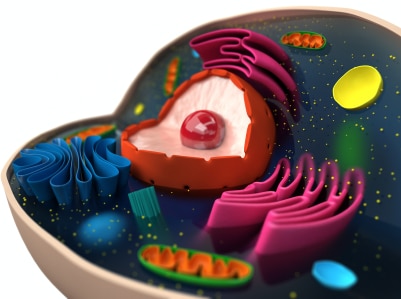 Mitochondrial Decline Theory of Aging
Mitochondrial Decline Theory of Aging
If your goal is to live as long as possible as well as possible it’s essential that you have some understanding of how we age. There are several theories of aging, and it’s most likely that these various theories all contribute to the aging process. In previous posts we discussed the Free Radial Theory of Aging and the Neuroendocrine Theory of Aging. Today we are going to harness the power and discuss the Mitochondrial Decline Theory of Aging. The Mitochondrial Decline Theory of Aging was first proposed in 1972 by Denham Harman.
Unless you have a background in the biological sciences you may have never heard of mitochondria. Mitochondria are organelles in the cells that produce the energy needed to sustain life. Without mitochondria there is no cellular energy and without energy to power our cells there is no life. If you understand that simple relationship then it makes sense to take steps to preserve your mitochondria as best as possible.
Mitochondria
Mitochondria look like tiny capsules or short sausages in the cell. They take chemicals in the food we eat and convert them to ATP – the energy molecule that fuels the body. Mitochondria produce 95% of the ATP the body uses. ATP is made a couple of different ways in the mitochondria. Some of it is produced by the Krebs cycle or tricarboxylic cycle (TCA) and some is produced by the oxidative phosphorylation electron transport system (ETC).
If you ever see a diagram of a human cell it is usually depicted containing one mitochondrion (mitochondria is plural). In reality there are many mitochondria per cell – the number being dependent on that cell type’s need for energy. For example, the heart which is beating every second contains something like 5,000 mitochondria per cell while the liver contains 1,000 to 2,000 mitochondria per cell and the biceps muscle contains 300-500 mitochondria per cell.
Mitochondria are unlike other organelles in our cells in that they contain their own DNA. Mitochondria are once thought to represent separate organisms. Some of the DNA in mitochondria differs from the DNA contained within the nucleus of the cell. What is unique about mitochondria is they can replicate independent of cell division. This means to some degree mitochondria control their own destiny. Under certain circumstances it is possible to increase the number of mitochondria in your cells.
Why Mitochondria Function Declines
Mitochondria are highly susceptible to damage caused by free radicals. DNA in the nucleus of the cell is somewhat protected from free radical damage (though it still occurs), but mitochondrial DNA has no protective system. We are bombarded by free radicals from our environment, but also from our metabolism which is affected by what we eat and our activity level. The body contains its own system to neutralize free radicals, but that system can get overwhelmed in the wake of a sudden increase in free radicals and/or over the course of aging.
Damaged mitochondria are usually broken down by the cell and recycled. Sometimes though mitochondria are damaged enough that they are unable to produce energy or ATP but remain “alive”. Over time these mitochondria multiply but are non-functional and eventually out number the functional mitochondria – leading to decline in cellular function.
Mitochondrial damage is more likely to occur in cells that have little capacity to divide after childhood. These include cells of the brain, heart, and skeletal muscles.
Minimizing Mitochondrial Damage
Mitochondria can be regenerated with calorie restriction, intense aerobic exercise, and some drugs. Nutritional supplements can protect mitochondria from free radicals and delay mitochondrial delay. Metabolism of food generates free radical. Thus consuming fewer calories lessens the free radical load on the body. Intense aerobic exercise serves as a stimulant to trigger mitochondrial regeneration. Intense aerobic exercise is best done in intervals and is known as high intensity interval training.
Metformin is a drug used to treated diabetes that can also stimulate mitochondrial regeneration and also induces metabolic changes in the body similar to those seen with calorie restriction. It is a very safe drug.
Hydergine is a drug used in the treatment of Alzheimer’s disease. At least in laboratory animals Hydergine induces more brain synaptic mitochondria.
Supplements to Protect Mitochondria
Below are the more important supplements to consider taking to protect mitochondria and recommended daily doses.
- B-complex vitamins. B2 and B3 are important for the production of FADH2 and NADH which are essential for function of the Krebs cycle. Take a B-complex vitamin with 25 mg to 100 mg of B2 and 50 mg to 200 mg of B3.
- CoQ10 is an antioxidant and vital for the electron transport system. Take 100 to 200 mg of CoQ10.
- Acetyl-L-carnitine is a precursor of acetyl Co-A which jump starts the TCA system. Take 500 mg to 1,000 mg of acetyl-L-carnitine twice a day.
- Lipoic acid is an antioxidant and along with acetyl-L-carnitine partially reverses the decline in mitochondria. Take 50 mg to 100 mg of lipoic acid 2-3 times a day.
- N-acetylcysteine (NAC) is a precursor of glutathione a potent antioxidant. Take 600 to 1,200 mg of NAC a day.
So there you have it – the Mitochondrial Decline Theory of Aging and what to do about it.
